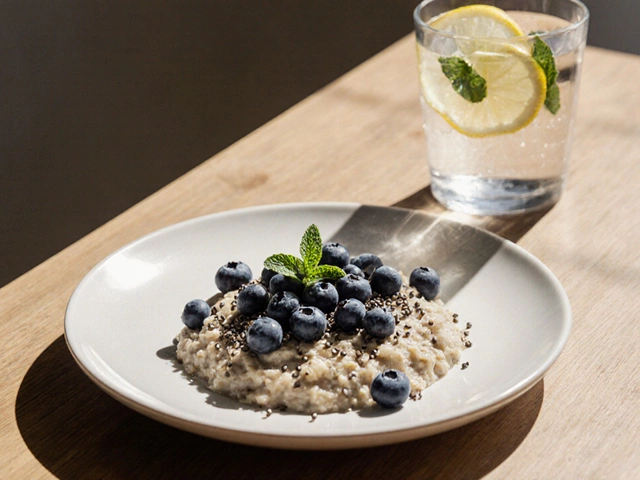Baking Soda Meat: How to Turn Tough Cuts into Tender, Juicy Meals
If you’ve ever sliced into a steak and found it chewy, you’re not alone. A little kitchen chemistry can fix that – and the star ingredient is baking soda. It’s cheap, easy to find, and works like a magic wand on meat that’s been overcooked or just naturally tough.
Why Baking Soda Works on Meat
Baking soda is an alkaline powder. When you sprinkle it on meat, it raises the pH on the surface. Higher pH makes the muscle fibers relax, which stops them from tightening up during cooking. The result is a softer texture and less water loss, so the meat stays juicy.
Think of it as giving the meat a short spa treatment before it hits the pan. The process only takes a few minutes, but the effect lasts through the whole cooking cycle.
How to Use Baking Soda on Meat
1. Measure a tiny amount. For a pound of meat, use about 1/4 teaspoon of baking soda. Too much can give a metallic taste.
2. Mix with a little water. Dissolve the baking soda in 1‑2 tablespoons of water to make a thin paste. This helps it spread evenly.
3. Coat the meat. Toss the meat in the paste, making sure every piece is covered. For larger cuts, you can rub the paste directly onto the surface.
4. Let it rest. Keep the coated meat in the fridge for 15‑30 minutes. Shorter times work for thin slices; longer times (up to an hour) are fine for thicker chops.
5. Rinse and pat dry. After the rest period, rinse the meat under cold water to remove excess soda, then pat it dry with paper towels. This step prevents any lingering after‑taste.
6. Cook as usual. Now the meat is ready for grilling, stir‑frying, or slow‑cooking. You’ll notice it browns nicely and stays tender.
That’s the whole trick – no fancy marinades or expensive equipment needed.
Safety and Flavor Tips
Don’t overdo it. Using more than a teaspoon per pound can leave a slightly bitter or soapy flavor. Always rinse the meat before cooking to avoid that taste.
If you love seasoning, add your favorite herbs, salt, or spices after the rinse. The soda won’t interfere with flavors; it just prepares the texture.
Watch the cooking temperature, too. Baking soda doesn’t protect meat from burning, so keep an eye on heat levels, especially when searing.
Quick Recipes That Benefit From Baking Soda
Stir‑Fry Beef Strips: Slice flank steak thin, coat with the soda paste, rest 20 minutes, rinse, then stir‑fry with garlic, ginger, and soy sauce. You’ll get melt‑in‑your‑mouth beef in minutes.
Slow‑Cooked Pork Shoulder: Rub a small amount of soda on the whole shoulder, let it rest an hour, then rinse. Cook low and slow in your Crockpot with onions and BBQ sauce. The pork stays juicy and pulls apart easily.
Chicken Thighs: For extra‑tender thighs, dust a pinch of soda on the skin, rest 15 minutes, rinse, and bake. You’ll hear a crisp snap when you bite into the skin, and the meat stays moist.
These ideas show how the soda trick works across different proteins. You can experiment with any cut you find tough.
Bottom Line
Baking soda is a simple, cheap way to rescue tough meat and make every bite tender. Just remember the right amount, a brief rest, and a good rinse. Try it next time you’re stuck with a chewy steak or a dry chicken breast – you’ll be surprised how easy it is to get restaurant‑quality tenderness at home.

What Really Happens If You Don’t Rinse Baking Soda Off Meat? Safe Kitchen Answers
by Landon Weathers / 5 Jul 2025What’s the risk if you skip rinsing baking soda off meat? This article uncovers side effects, food safety facts, and the science behind proper rinsing in your kitchen.




